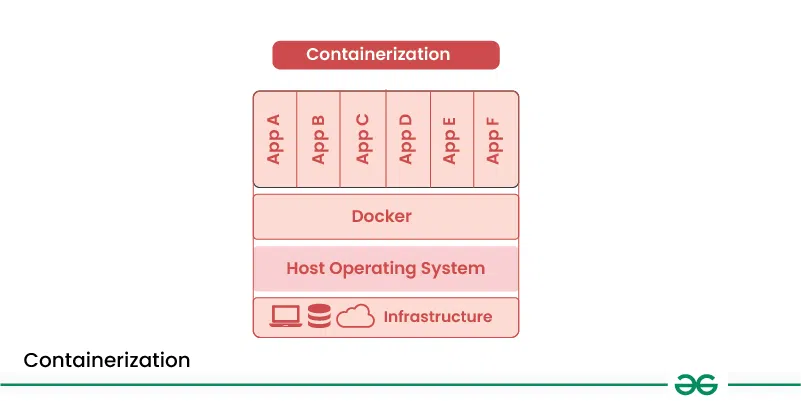Virtualization vs. Containerization in System Design
Last Updated :
04 Mar, 2024
Virtualization and containerization are two popular technologies used in modern software development and deployment. Both technologies offer ways to abstract and isolate applications from the underlying hardware, but they have distinct differences in terms of architecture, resource utilization, and deployment flexibility. Understanding the differences between virtualization and containerization can help you choose the right approach for your application needs. This article explores the concepts of virtualization and containerization, compares their advantages and disadvantages, and provides insights into when to use each technology.
.webp)
Important Topics for Virtualization vs. Containerization
Virtualization is a technology that creates virtual versions of computer resources such as hardware platforms, operating systems, storage devices, and network resources. It’s like creating a software-based replica of a physical machine, allowing you to run multiple isolated environments on the same hardware or across a distributed system.
- Imagine you have a powerful computer but you only use a small portion of its resources.
- Virtualization allows you to split that computer into several virtual machines (VMs), each acting like a separate computer with its operating system and applications.
- Each virtual machine is isolated from the others, meaning issues in one virtual machine won’t affect others.
- This allows you to optimize resource utilization, run multiple applications on a single machine, and improve scalability by easily adding or removing virtual machines as needed.

What is Containerization?
Containerization is a lightweight form of virtualization that allows you to run applications and their dependencies in isolated containers. Each container shares the same operating system kernel but is isolated from other containers, providing a portable and consistent runtime environment for applications.
- Containers provide process isolation, ensuring that applications running in one container do not affect applications running in other containers.
- Containers encapsulate all dependencies and configuration required to run an application, making them portable across different environments.
- Containers are lightweight compared to traditional virtual machines (VMs) because they share the host operating system kernel.
- Containers are designed to be scalable, allowing you to quickly scale up or down based on demand.
- Containers enable developers to build, test, and deploy applications more efficiently, leading to faster release cycles and improved collaboration between development and operations teams.

Virtualization Vs. Containerization
Below are the differences between virtualization and Containerization.
| Aspect |
Virtualization |
Containerization |
| Isolation |
Each VM runs its own guest operating system |
Containers share the host operating system kernel |
| Resource Usage |
Each VM requires its own set of resources |
Containers are lightweight and share host resources |
| Performance |
May have higher overhead due to multiple OS instances |
Lower overhead as containers share the host OS kernel |
| Portability |
VMs are less portable due to varying guest OS |
Containers are highly portable across different systems |
| Deployment Speed |
Slower deployment times due to OS boot process |
Faster deployment times as containers start quickly |
| Resource Utilization |
Requires more resources as each VM has its own OS |
More efficient resource utilization with containerization |
| Ecosystem |
Mature ecosystem with various hypervisors and tools |
Growing ecosystem with tools like Docker and Kubernetes |
| Use Cases |
Ideal for running multiple applications on a single host |
Ideal for microservices architectures and cloud-native applications |
Best Scenarios for Virtualization and Containerization

Conclusion
Virtualization and containerization are two distinct technologies that offer unique advantages and use cases. Virtualization provides strong isolation and flexibility, making it suitable for running legacy applications and environments with specific operating system requirements. On the other hand, containerization offers lightweight and portable runtime environments, making it ideal for modern, cloud-native applications and microservices architectures.
Share your thoughts in the comments
Please Login to comment...